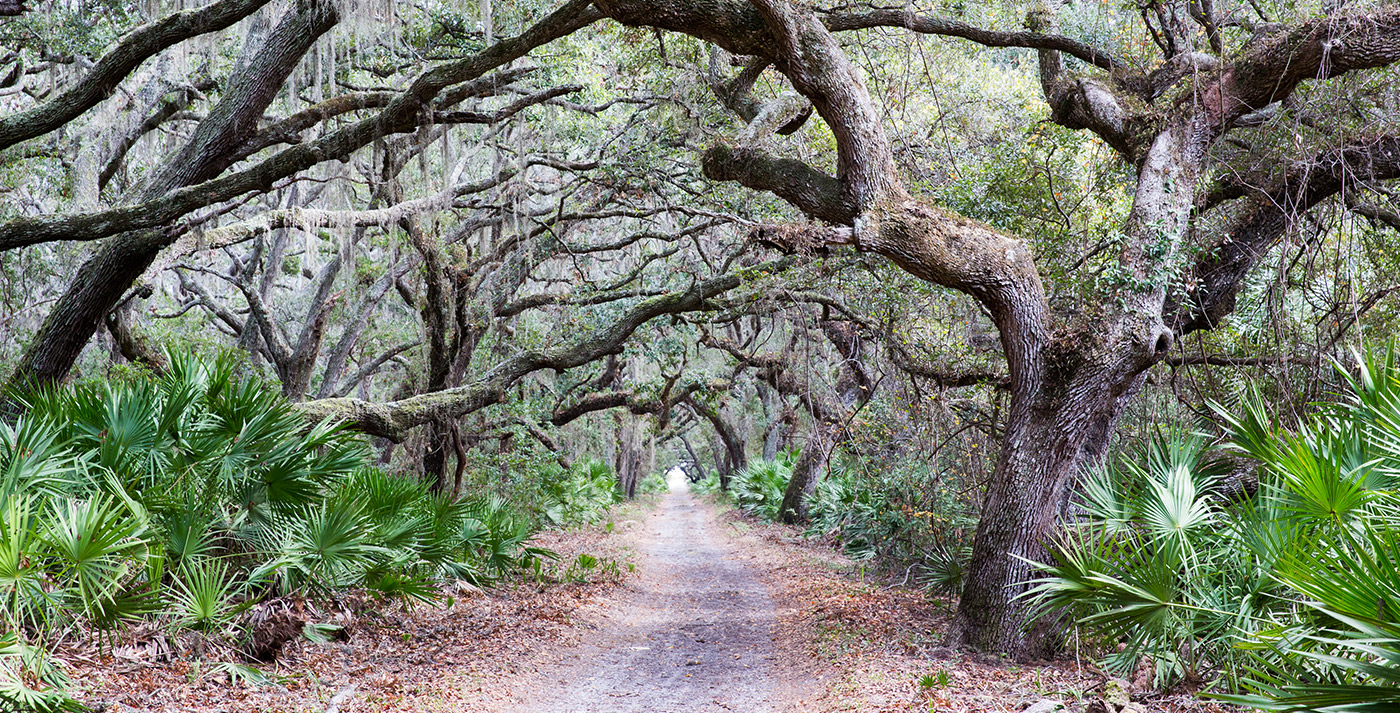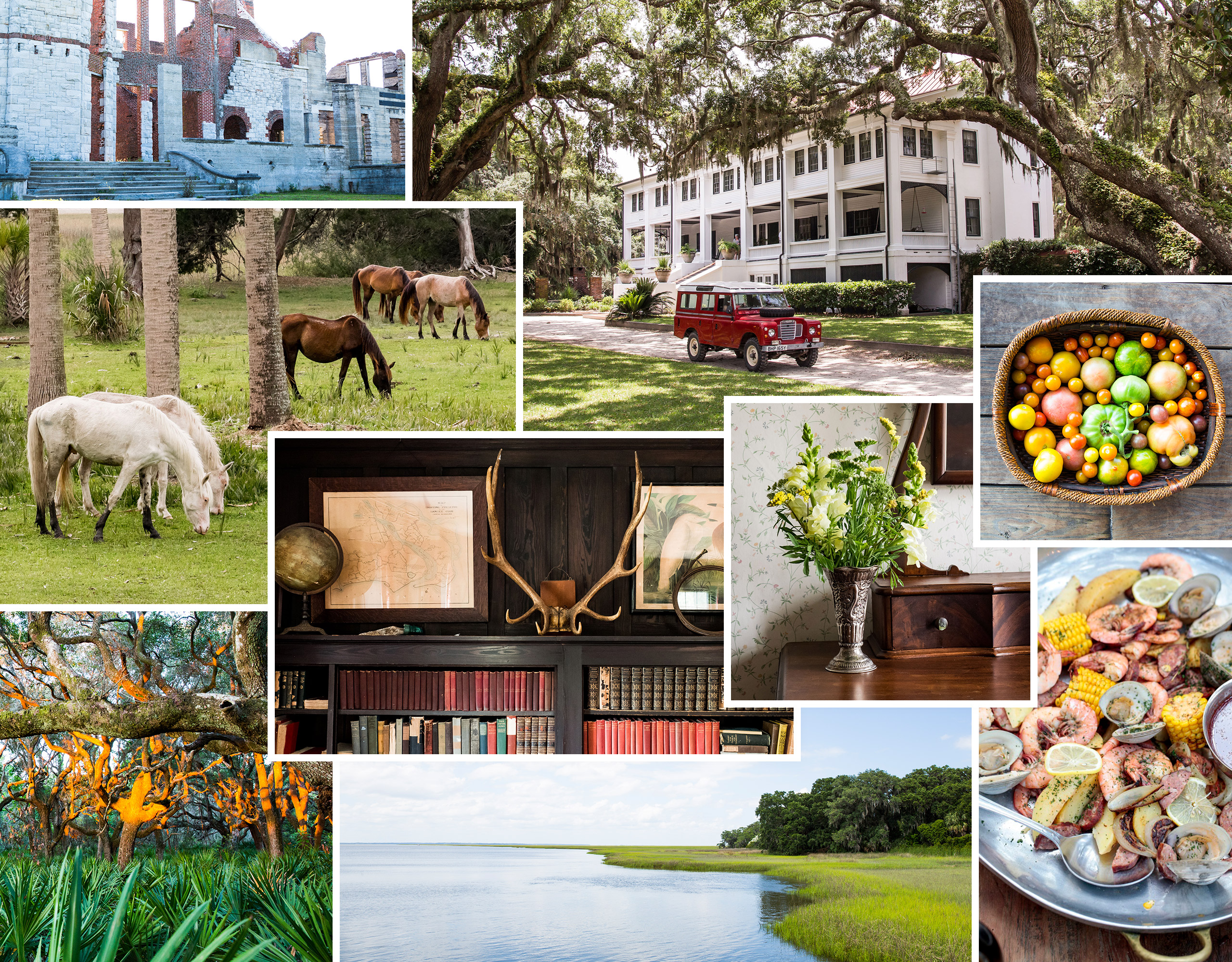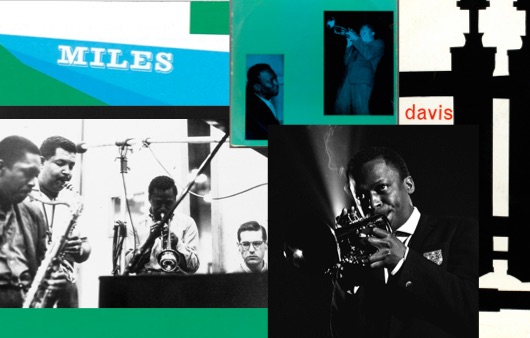
Cumberland Island, just off the coast of Georgia, is larger than Manhattan yet somehow manages to maintain the feeling of a well-kept secret.
The island is home to a dwindling population of wild horses and to gracious ruins of Gilded Age mansions. Its small contingent of human residents—a remnant enclave of heirs and heiresses, scientists, and public servants—is wary, welcoming, sometimes at odds, but united in their love of this public paradise.
Cumberland Island National Seashore was designated a wilderness area by an act of Congress in 1972. Excepting some thousand acres held privately and in perpetuity, the island belongs to you and to me. And so, provided you’ve made a reservation either with the National Park Service (months in advance) or with the Greyfield Inn (for a step back in time), you are welcome among the 300 daily permitted visitors.
No bridge spans the sound that separates the western bluff from the mainland, and for most visitors there is but one means of approach: a ferry embarks from a sand-swept fishing village twice a day, commencing its slow course toward the island. The channel curves through salt marshes, past tidal flats mined by wading birds—egrets, herons, and bitterns—past oyster beds and, perhaps, a group of horses grazing.
Once ashore, you are quickly taken into the island’s vegetative embrace. A single, sandy road yaws beneath a corridor of live oaks. Armadillos rattle in banks of saw palmetto. Dispossessed of one’s metrical senses (not to mention cellular service), a visitor might soon come to wonder, What time is it? Which way? How far?
Alligators are the senior residents here. The hogs arrived with the Spanish missionaries in the 16th and 17th centuries. And people come and go so reliably, the deer seem not to notice.
The first of those peoples arrived over 4,000 years ago. More recently, the patriot Nathaniel Greene was given a plantation on the island after he sacrificed his personal fortune for the Revolutionary effort. He built a mansion that he called Dungeness, which burned and was rebuilt by the industrialist Thomas Carnegie before, years later, it burned again. Its ruins linger yet on the southernmost reach of the island amid fractional statuary gardens and forgotten outbuildings and the crows.
Other Carnegie mansions remain hospitable, full of heirloom treasures and family photos of the many who lived and loved here, for better or worse. (John F. Kennedy Jr. and his bride were married in the First African Baptist Church on the island’s north end.) The park service has restored Plum Orchard, where it operates daily tours. At Greyfield, the walls are of dark wood, the rooms lovingly appointed, and things work as they always have. One shucks one’s own oysters in good company. Lights are low in the honor bar. Sumptuous dinners are served on the first floor. (And a recent restoration ensures that each bedroom now adjoins a private bath.)
Now as ever Cumberland Island provokes something innate. The sound of the ocean allows dead reckoning. The pioneering spirit awakes. Once diverted from the beaten path, a visitor might spend hours scanning the 17 miles of uninterrupted beach, seeking solitude or sun or combing memento mori from the sand.
The shorebirds scatter up ahead.
The waves beat on.
This is the ragged edge of America, the heart on its sleeve, and when the wind is just right, at dusk, one might hear the bugler at the Naval Submarine Base Kings Bay, just distant, sound “Retreat” and “To the Colors.” Night falls quickly and too soon. The temperature drops. The last mainland outpost is now just a simple beacon blinking in the solid dark of the horizon. And isn’t it enough to know that it is there?- Photograph by Gabriel Hanway
- Photographs by Peter Frank Edwards and Gabriel Hanway; Courtesy of Greyfield Inn







